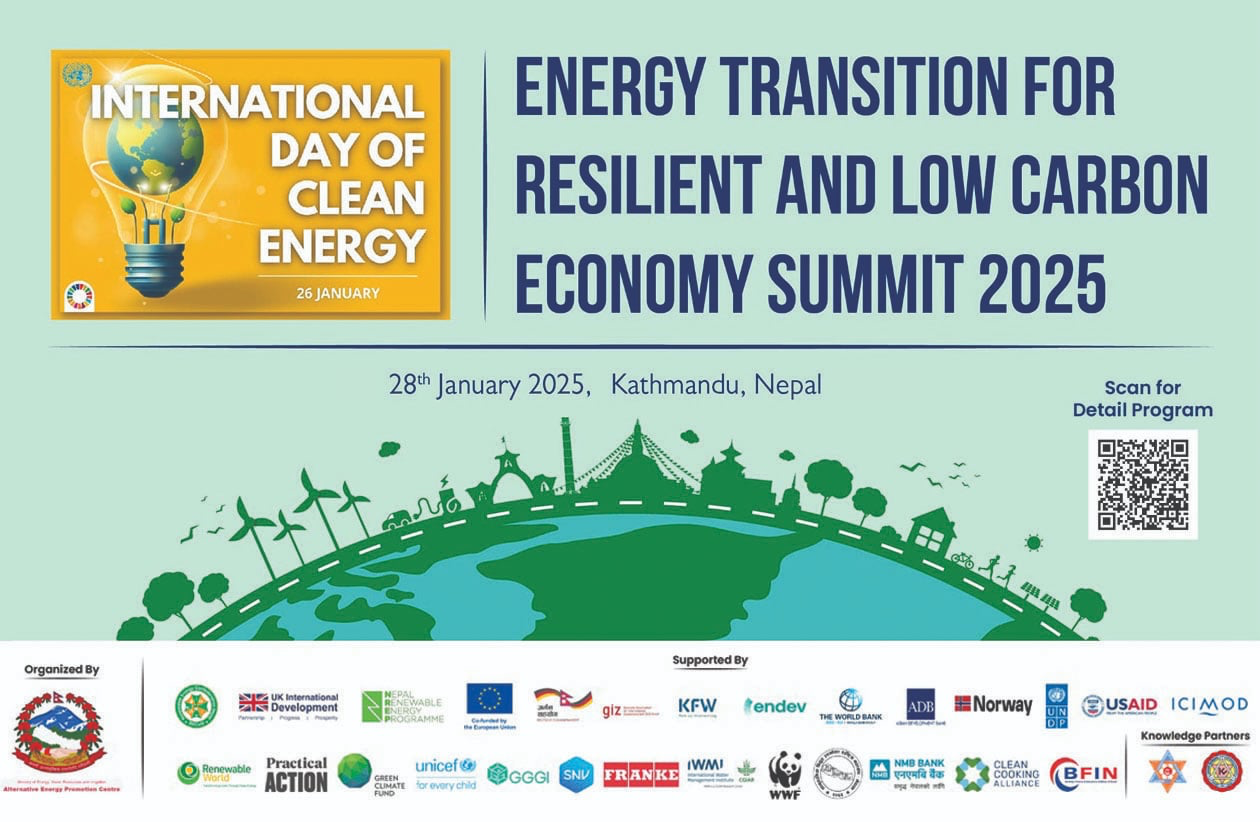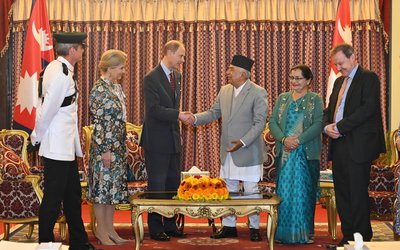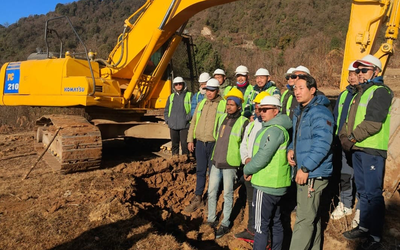
Yebisha, was proudly hosting anevent with the presence of local government representatives, community people, and, other stakeholders from the Province.While many children were enjoying their weekend with their family and friends, the children gathered at Rautamai rural municipality seemed to be serving a different purpose.
Yebisha and her friends are gathered from their respective ward-level child clubs to celebrate the milestone they have reached in their roles to make their ward in Rautamai child-friendly.
The moment of declaration of CFLG is very inspiring as children like Yebishaactively participating showcasing their confidence and vision for their community. To witness their participation as the community celebrates the moment together with different performances, as well asthe commitment to continue the momentum. The declaration of CFLG is one of the important milestones however, to reach the point of declaration and sustain the result, the municipalities and children in those municipalities have worked tirelessly over the past years.
What and why CFLG?
The Child Rights communities in Nepal and Nepal government with the support from development partners have been practicing several interventions to promote child rights at the local level. The engagement of local government in developing rights responsive environment, enabling opportunities for children and families has been practiced since the beginning of 2000. Yet, the comprehensive approach for implementing Decentralized Integrated Child Rights Interventions was formally recognized and preceded with the adoption of the Child-Friendly Local Governance Program in 2007. The Child-Friendly Local Governance (CFLG) as expressed in the National Framework, is “to provide overall guidance to the government in realizing and mainstreaming the rights of children (Survival, Development, Protection, and Participation) into the local government system, structure, policies and process"(MOLD, 2007). It further emphasizesprioritizing the agenda of children in policy, planning, and budget. CFLG embarks on the implementation of the strategies like inter-sectoral convergence, institutional capacity development, and ensuring accountability for children.
The Government of Nepal has recognized CFLG as a key means for mainstreaming child rights in local governance and, ensuring that the country can achieve its development goals as well as the realisation of Sustainable Development Goals (SDGs) at the local level, mainly those related to children, especially school going age children (boys and girls) adolescent girls and women from disadvantaged groups, who benefit from improved local governance that is responsible, accountable, decentralized, inclusive and child-friendly (GoN, 2015).
Through the fifty-one indicators overarching CFLG, creates a base for children to enjoy their life in all its fullness. The comprehensive indicators have been widely agreed as key contributorsto progressing child rights into the governance process. Ensuring a child protection case management system is one of the major focuses of CFLG where local government should show tangibleevidenceof no child marriage, no child labor, full school enrollment, full birth registration, no open defecation, fully immunized children, and many more. Once a local government ensures the targeted reach on CFLG indicators, the district coordination committee (in case of ward declaration) and representatives from the province Government (in case of municipality/rural municipality declaration) have to monitor and ensure the achievement of indicators with a comprehensive report with post declaration/sustainability plan, only the local bodies can be declared as CFLG.
The Government endorsed CFLG Implementation Guideline in 2021 (by the ministry only), CFLG Declaration Procedure in 2022. He agenda of CFLG has also been recognized under the responsibility of wards by the Local Government Operation Act, 2017. Ministry of Federal Affairs and General Administration (MoFAGA) has been coordinating with the local government and relevant mechanisms to mainstream the priorities related the children. The Government has set a target to make entire country CFLG by 2030.
Progress so far:
In addition to this, local Governments themselves have developed the CFLG strategy plan, child profile, investment plan, and other necessary policy documents in the CFLG-adopted areas, practicing thetrue essence of federalism. With numerous efforts, investments, and expertise in the sector of child rights, the Government of Nepal has set an ambitious target to make the entire nation child friendly by 2030 (2087 BS). The target set has been further supported by the civil society organizations as well as the development organizations like UNICEF, World Vision, and others through technical support, capacity strengthening, and ensuring child participation in the decision-making within the communities. According to the State of ChildrenReport 2022, 22 local levels (16 municipalities & 6 rural municipalities), 48 wards of 32 local levels have been declared CFLG until 2022. The numbers are increasing gradually after a first child-friendly village in 2013 of the then Pragatinagar Village Development Committee, current Dewachuli municipality in Nawalparasi.
The journey of CFLG from 2006 to date has not remained smooth. There have been several challenges. While the village development committees that were on the verge of being declared child friendly changed to rural municipalities, in the process many wards merged. The indicators that had been met have to be relooked upon. Likewise, the revision of indicators inalso created a strong benchmark too many local governments. While these policy level changes are one aspect, the perspective shift from infrastructural development to human development remains to be a major factor to be considered. While doing so, continuous investment in the participation, empowerment, and child-centered development is the key. There is still the issue to see the broader children’s issue and child rights governance from the public financing perspective.
What should be in priority?
The concerns relating to the children should be everyone’s concern. When such is done, reaching the target of making the entire nation CFLG by 2030 will be possible. However, while doing so, as a policy-making and regulatory body- the prime responsibility to ensure the rights of children comes under the Government. Along with the Government, civil society organizations, private sectors, community groups and other relevant authorities should work in collaboration.
The coordinating ministry ofthe federal Government has to ensure effective coordination among different ministries specifically theMinistry of Finance, the Ministry of Women, Children and Senior Citizens, and, the National Planning Commission as these Ministries work directly for the issues of children. It is high time that the Government takes initiative to create an updated database to track the progress relating to CFLG efforts made at the local level; it is also crucial for those investing in children to be monitored through such a database. It is the responsibility of the elected representatives to reflect their commitments and promisesto ensuring the rights of the children by endorsement of the CFLG implementation guidelines from the cabinet. This will not only help towards ensuring accountability of the local level, it will take us a step closure to the aspirations of child rights that the country has made.
At the same time, the provincial government can enable a structured monitoring of municipalities prior to the declaration through collaborative actions amongst inter-governmental mechanisms, I/NGOs, and relevant stakeholders to ensure accountability. Such effort will guide each province toward the path of child friendly province hence contributing to the government’s target of making the country child friendly by 2030.
The biggest contribution of CFLG has been the integration of child rights intervention in governance. Previously, there were efforts made in the sector of child rights but the programs were fragmented (WVI Nepal Study on CFLG, 2018). There was the prevalence of sector wise programs, which were working for the benefit of children, but all the efforts were from the respective sectors (health, education, protection, etc.) in fragmented form. Also, the government had limited investment in children. However, after an adoption of CFLG, child rights were viewed not as an isolated intervention, but the issue that should be integrated into the governance itself. This very concept has synergized governance, development intervention, and child rights. It highlighted the fact that issues of child rights are not only development problems; rather overarching child rights governance.
The child-friendly local governance hence is the development paradigmfor child wellbeing. It needs to be considered as the foundation of development and promote governance in services that focus on the issues ofour children. Given, CFLG is one of the comprehensive packages to ensure child rights; multi-sectoral, multi-functional and multi-layered initiatives can only expedite the movement. CFLG is one important milestone to mainstream children’s issues into the government and governance process. It facilitates the process of addressing the issues related to children and at the same time also ensures meaningful engagement of childrenand their leadership in the governance process. It is high time that all the stakeholders realize CFLG is a child rights governance intervention. CFLG must be focused on policy and legislative advocacy at the local level, partnering with local government, empowering children and obtaining social mobilization. CFLG must not be communicated and expected as service delivery interventions by facilitating organizations.
The authors are child rights activists associated with World Vision International Nepal.















